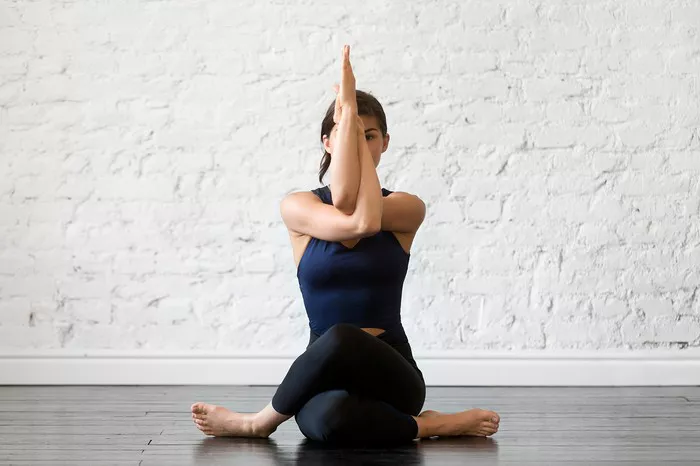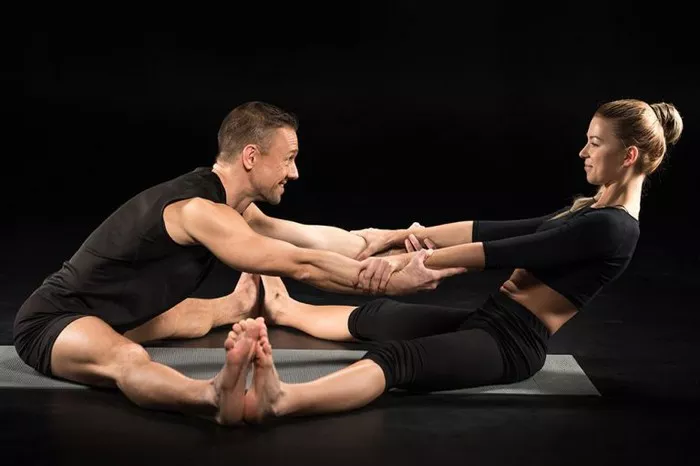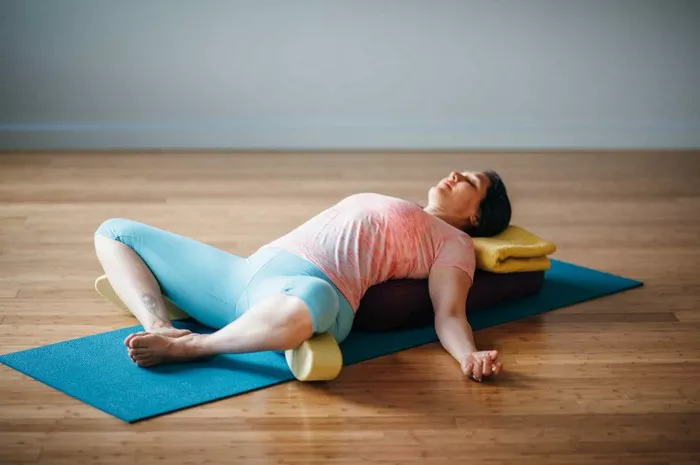Yoga and Zen Yoga are both spiritual practices that focus on the union of mind, body, and spirit. They are rooted in ancient traditions, each with its own distinct philosophy and approach to achieving inner peace and balance. While they share some similarities, they also have key differences in their methods and goals. This article explores the core differences between traditional yoga and Zen yoga, shedding light on how each practice works, its benefits, and how practitioners can choose between them based on their personal preferences and goals.
Understanding Yoga
Yoga is an ancient practice that originated in India over 5,000 years ago. It is a holistic discipline that aims to integrate the body, mind, and spirit through physical postures (asanas), breath control (pranayama), meditation, and ethical guidelines. The word “yoga” comes from the Sanskrit word yuj, which means “to unite” or “to join.” Therefore, yoga is fundamentally about uniting the individual with the divine, the universe, or their true self.
The practice of yoga encompasses a wide range of styles, each with its unique approach. Some of the most common types of yoga include:
Hatha Yoga: A physical and postural form of yoga that focuses on the alignment and flexibility of the body.
Vinyasa Yoga: A dynamic style that connects breath with movement, creating a flowing sequence of poses.
Ashtanga Yoga: A rigorous form of yoga that follows a specific series of postures, synchronized with breath.
Kundalini Yoga: A spiritual form of yoga that aims to awaken the dormant energy at the base of the spine through chanting, breath, and meditation.
Iyengar Yoga: A style of yoga that emphasizes precise alignment and the use of props (such as blocks and straps) to assist in achieving the correct posture.
Despite the differences in style, all forms of yoga share the same goal: the promotion of physical health, mental clarity, emotional balance, and spiritual growth.
Core Principles of Traditional Yoga:
Physical Postures (Asanas): These exercises strengthen, stretch, and tone the body, improving flexibility, balance, and posture.
Breath Control (Pranayama): The practice of controlling the breath to increase energy flow, reduce stress, and enhance focus.
Meditation: A key component of yoga that involves focusing the mind to cultivate awareness, reduce mental chatter, and promote inner calm.
Ethical Guidelines (Yamas and Niyamas): These are moral principles that guide practitioners in their daily lives, fostering compassion, honesty, and non-violence.
Spirituality: At its core, yoga is not only a physical practice but also a spiritual journey that encourages the seeker to connect with their higher self or the divine.
What is Zen Yoga?
Zen Yoga, on the other hand, is a fusion of Zen Buddhist principles and traditional yoga practices. It draws its inspiration from Zen Buddhism, which originated in China as Chan Buddhism before spreading to Japan. Zen emphasizes direct experience, simplicity, mindfulness, and meditation, all aimed at achieving enlightenment and inner peace. Zen Yoga combines these principles with the physical postures and breathing techniques found in traditional yoga, creating a practice that is grounded in mindfulness, simplicity, and non-attachment.
While Zen Yoga retains many elements of traditional yoga, its primary focus is on meditation and mindfulness. It incorporates yoga asanas, but with a greater emphasis on cultivating awareness of the present moment. The physical postures are often practiced slowly and mindfully, with deep attention paid to the sensations within the body and the flow of breath. The goal is not just to perform the poses correctly, but to experience each movement with full presence and awareness.
Core Principles of Zen Yoga:
Mindfulness: The practice of being fully present and aware in every moment, whether during asanas or daily activities.
Meditation: A central element of Zen Yoga, where practitioners engage in seated or moving meditation to quiet the mind and connect with their inner self.
Simplicity: Zen emphasizes simplicity and minimalism. This is reflected in the approach to yoga, which tends to be less complex and more focused on basic, grounding movements.
Non-Attachment: Practitioners are encouraged to release attachments to outcomes, judgments, or desires, fostering an attitude of acceptance and openness.
Bodily Awareness: Just like traditional yoga, Zen Yoga involves mindful attention to the body, but it places more emphasis on how the body feels in the present moment rather than achieving specific physical goals.
Zen Yoga is often seen as a form of moving meditation. The flow of breath, posture, and mental focus is aimed at bringing the practitioner into the present moment, encouraging inner stillness, and cultivating peace of mind.
Key Differences Between Yoga and Zen Yoga
While both traditional yoga and Zen Yoga are rooted in spiritual and philosophical traditions, they differ in several important ways:
1. Philosophical Foundations
Yoga: Traditional yoga is rooted in the teachings of the Yoga Sutras by Patanjali, which describe an eight-limbed path (Ashtanga Yoga) that includes ethical principles, physical postures, breath control, and meditation. Yoga’s goal is often described as self-realization—attaining a deep connection with one’s true self or the divine.
Zen Yoga: Zen Yoga, on the other hand, is primarily based on the principles of Zen Buddhism, which emphasizes meditation and mindfulness. Zen’s ultimate goal is to achieve satori (a sudden moment of enlightenment or awakening), with a focus on being present and experiencing life as it is, without attachment to thoughts or concepts.
2. Focus of Practice
Yoga: Traditional yoga places a significant emphasis on the physical aspects of the practice. While meditation and mindfulness are important, yoga practitioners often aim to improve their physical health, flexibility, strength, and balance.
Zen Yoga: The focus of Zen Yoga is primarily on the mental and spiritual aspects of the practice. Physical postures are used to facilitate meditation and mindfulness, but the ultimate goal is to cultivate a peaceful and still mind, free from distractions and mental chatter.
3. Approach to Meditation
Yoga: Meditation in traditional yoga is often structured, and it may involve various techniques such as concentration, visualization, and mantra repetition. The goal is to quiet the mind and achieve a deep meditative state.
Zen Yoga: Meditation in Zen Yoga is often more spontaneous and less structured. It emphasizes “just sitting” (zazen) and observing the breath, thoughts, and sensations without attachment or judgment. The focus is on being present in the moment, rather than aiming for a particular state of mind.
4. Physical Postures
Yoga: Traditional yoga places a strong emphasis on asanas (physical postures). These postures are designed to align the body, increase flexibility, improve posture, and strengthen muscles. Each style of yoga may have its own sequence and focus, from the more dynamic Vinyasa to the slower-paced Iyengar.
Zen Yoga: In Zen Yoga, the physical postures are typically simpler and less complex. The focus is on being mindful in each pose, rather than striving for perfect alignment or achieving advanced postures. Movements are often slower and more deliberate, with an emphasis on grounding and presence.
5. Use of Breath
Yoga: Breath control (pranayama) is an integral part of traditional yoga. Various pranayama techniques, such as Ujjayi breath, alternate nostril breathing, and kapalabhati, are used to control the flow of prana (life energy), reduce stress, and enhance concentration.
Zen Yoga: While breath awareness is important in Zen Yoga, it is typically less structured than in traditional yoga. The emphasis is more on observing the natural flow of the breath and being fully present with each inhalation and exhalation, rather than controlling or manipulating the breath.
6. Goal of the Practice
Yoga: The goal of traditional yoga is often self-realization, which may involve spiritual awakening, emotional healing, and the development of physical health. The practice can be seen as a path to enlightenment or a means of connecting with the divine.
Zen Yoga: The goal of Zen Yoga is enlightenment or awakening (satori). This is achieved through mindfulness, presence, and the direct experience of the present moment. Zen Yoga encourages letting go of attachment to outcomes and focusing on the experience itself.
Benefits of Yoga vs Zen Yoga
Both yoga and Zen Yoga offer a wide range of physical, mental, and emotional benefits. However, the specific outcomes depend on the style of practice and the individual’s approach.
Benefits of Traditional Yoga:
Improved Flexibility and Strength: The physical postures in traditional yoga help increase flexibility, balance, and muscle strength.
Stress Reduction: Breathwork and meditation help calm the nervous system, reduce anxiety, and promote relaxation.
Enhanced Mind-Body Connection: Through mindful movement and breathing, yoga fosters a deeper connection between the body and mind.
Spiritual Growth: Yoga’s spiritual components encourage self-awareness, compassion, and connection to a higher power.
Benefits of Zen Yoga:
Mental Clarity and Focus: Zen Yoga’s emphasis on mindfulness and meditation helps clear the mind, improve concentration, and foster mental clarity.
Emotional Balance: By cultivating presence and non-attachment, Zen Yoga helps release negative emotions and promotes emotional well-being.
Deep Sense of Peace: The practice of Zen Yoga helps create a profound sense of inner peace, relaxation, and tranquility.
Heightened Awareness: Zen Yoga encourages practitioners to become more aware of the present moment, reducing distractions and fostering a deep sense of presence.
Conclusion
The choice between traditional yoga and Zen Yoga ultimately depends on your personal goals and preferences. If you are seeking a practice that emphasizes physical fitness, flexibility, and strength while also cultivating mindfulness and spiritual growth, traditional yoga may be a better fit for you. On the other hand, if your primary focus is on developing deep mindfulness, meditation, and presence in each moment, Zen Yoga might resonate more with you.
Both practices offer unique benefits and can complement each other. Some practitioners find it beneficial to explore both styles, integrating the physicality of traditional yoga with the mindfulness and simplicity of Zen Yoga. The most important thing is to choose a practice that aligns with your needs and helps you cultivate a sense of balance, peace, and self-awareness in your life.
Related Topics:


























